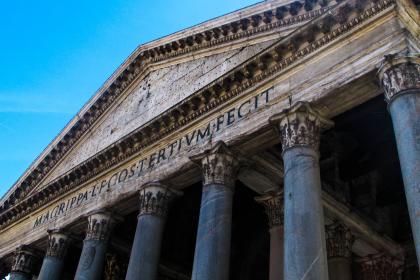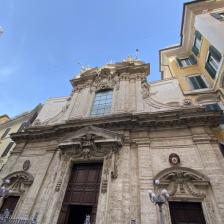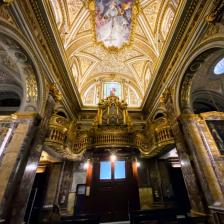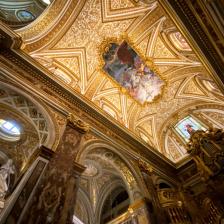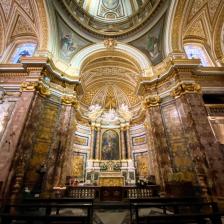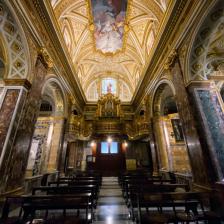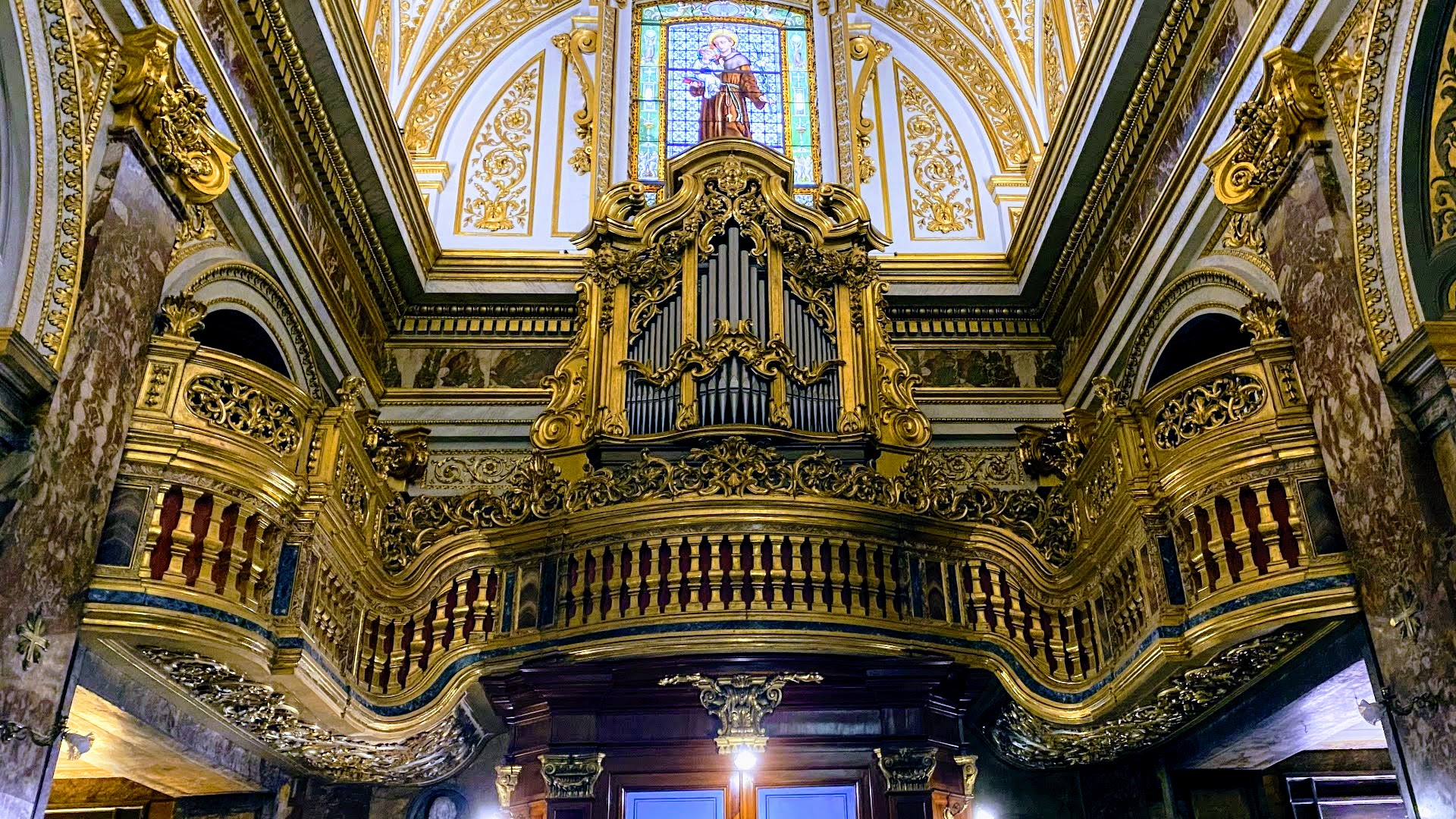
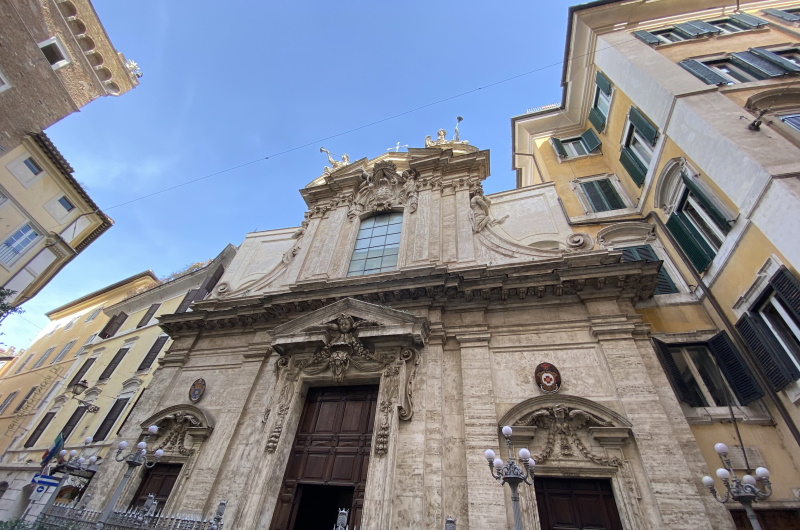
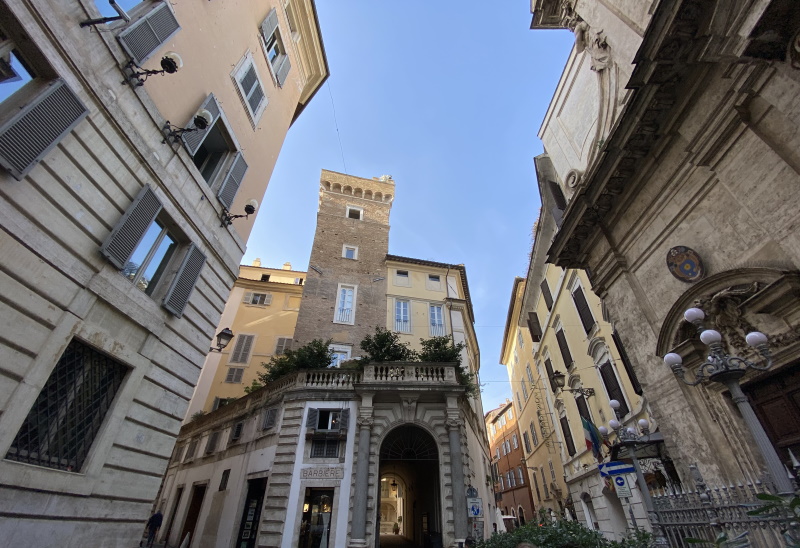
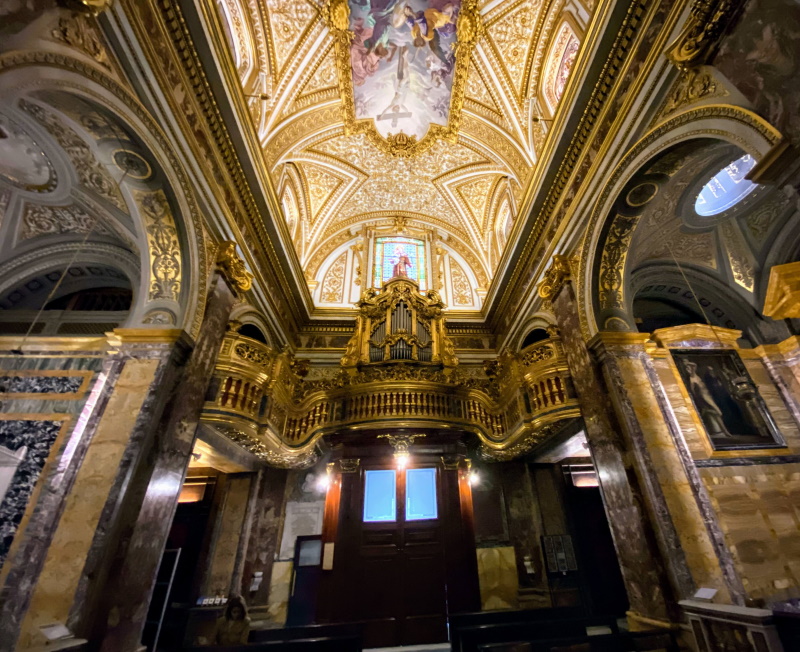

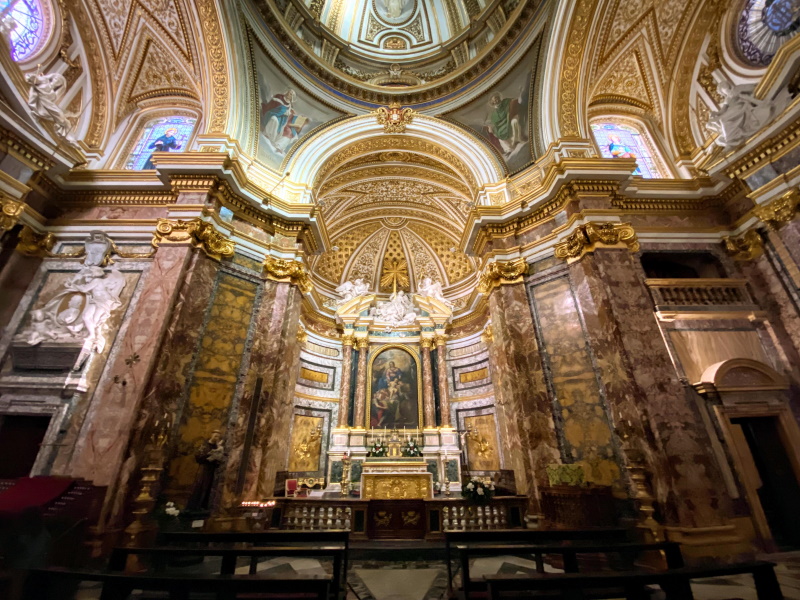

Étant donné le nombre croissant de pèlerins qui se rendaient à Rome pour prier sur les tombes des apôtres, des "églises nationales" commencèrent à être construites à la fin du Moyen Âge, comme Santa Maria in Monserrato pour les Espagnols, San Luigi dei Francesi et Santa Maria dell'Anima pour les Allemands.
Il en fut de même pour les fidèles lusitaniens avec l'église d'abord dédiée à Saint Antoine Abbé, puis baptisée du nom du plus connu des saints portugais, Saint Antoine de Padoue, né à Lisbonne.
Connue également sous le nom de Saint Antoine de Campo Marzio, l'église est située dans le rione du même nom et a été fondée en 1445 par Antonio Martinez de Chaves, qui venait d'être nommé cardinal par Eugène IV au Concile de Florence, et construite sur le site où Donna Giovanna de Lisbonne, une noble portugaise, avait établi un hospice pour ses compatriotes pauvres.
En 1638, l'église, trop petite, fut reconstruite par les Portugais, qui confièrent les travaux à Martino Longhi le Jeune, auquel succéda en 1674 Carlo Rainaldi, qui construisit la coupole.
La façade baroque, œuvre elle aussi de Martino Longhi, mais complétée par la suite par Cristoforo Schor, présente deux ordres. Au niveau inférieur, elle présente trois portails : celui du centre est surmonté d'un tympan triangulaire renfermant un ange ailé en marbre entouré de festons. Le niveau supérieur est dominé par une grande fenêtre et les armoiries des Braganza, une ancienne famille portugaise qui soutenait financièrement l'église ; deux figures d'anges assis complètent la façade.
L'intérieur, qui présente un plan en croix latine, est riche en magnifiques marbres polychromes. Sur les côtés, six chapelles abritent des sculptures et des peintures, dont un panneau avec des images de la Vierge et de Saint Antoine d'Antoniazzo Romano (1435-1509) et des peintures d'Antonio Concioli, Adoration des Mages, Nativité et Repos pendant la fuite en Égypte - toutes deux de 1782 - et le Monument De Souza d'Antonio Canova (de 1808). La décoration du transept est l'œuvre de Luigi Vanvitelli.
L'église abrite aussi un splendide orgue à tuyaux Mascioni, construit en 1748 par Manuel Pereira de Sampayo pour le Jubilé universel de 1750. Pendant la Seconde Guerre Mondiale, le précieux instrument a subi de graves dommages, mais en 1956, après une restauration minutieuse, il a été remplacé par un nouvel orgue de la société Fratelli Ruffatti, qui a utilisé le buffet d'origine. En 2008, le maître organiste Jean Guillou a poursuivi les travaux de conservation en installant un nouveau buffet et de nouveaux registres.
Chaque année, l'église de Saint Antoine des Portugais accueille la très attendue saison permanente de musique d'orgue de l'Institut portugais de Saint Antoine, qui propose un riche répertoire explorant les œuvres les plus significatives de la littérature d'orgue.
Photo : Redazione Turismo Roma
Basilique de Sant'Agostino in Campo Marzio
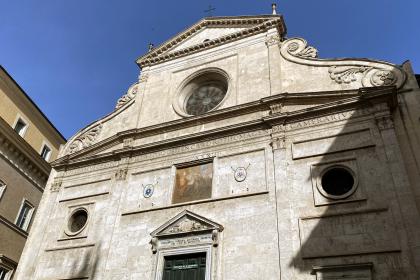
 Condividi
Condividi
Place Navone
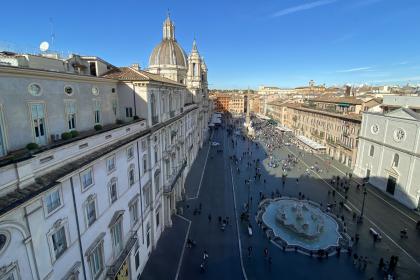
 Condividi
Condividi
L'un des complexes urbains les plus spectaculaires de la Rome baroque
La Torre della scimmia (La tour du singe)
 Condividi
Condividi
Informations
For the timetable of the masses and visiting conditions, please consult the contacts.
 Condividi
Condividi
Location
Pour connaître tous les services d'accessibilité, visitez la section Rome accessible.












































